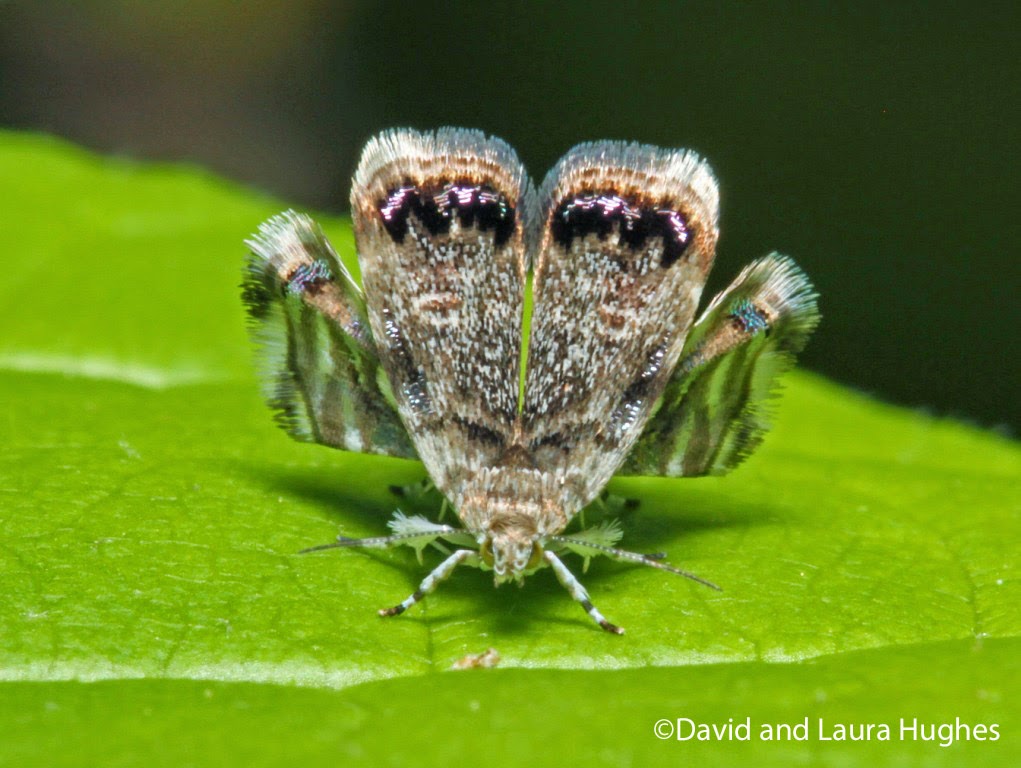Enjoy.
I learned about this moth and its ilk last year, courtesy of caterpillar guru David Wagner. We were light-trapping last June in Adams County, when this moth flew into the lights. It is one of the aquatic crambids, the Canadian petrophila, Petrophila canadensis, I believe. Dave pointed out that it is an apparent jumping spider mimic, as are a number of others in the genus Petrophila.
The evolution of mimicry fascinates me, and I was instantly smitten. Note the moth's gemlike markings lining the top of the hindwings. Those are the faux spider eyes. Unfortunately, being nighttime, the moth didn't do anything but sit motionless, but they certainly can animate themselves as we shall see.
This is a real jumping spider in the family Salticidae (for "saltatorial", which means "leaping" or "jumping"). You've probably seen these small spiders. They are about as cute as spiders can get, and ambulate with astonishingly fast jerky little leaps.
The Hughes, while exploring an area of Athens County recently, encountered this small moth at rest on an ash leaf. It too is a Petrophila moth, but I am unsure of the species. Note its fake eyespots, just as in the moth in the first photo.
A side view. The moth is on alert, knowing that potential danger lurks. It hunches forward and elevates its wings, much as a jumping spider rises high on its forelegs when ready to pounce.
The hind view is extraordinary. If you were a small beast on the same level as the moth, you'd probably take pause when confronted with this creature, even if you were predatory.
While these photos are cool, and build a case for the jumping spider mimic theory, the proof is in the locomotion. Exceptional videographers that they are, the Hughes managed an incredible video of the moth in motion on the leaf's surface. Check it out below:
Video: David and Laura Hughes
The quick jerky movements of the moth are amazingly similar to that of a jumping spider. So much so that even an experienced observer of natural history could easily be temporarily fooled. Resembling a fiercely predatory spider is good insurance against attack by would-be predators who might think twice about lunging at an animal that might turn the tables on them. The evolutionary fits and spurts that lead to such fabulous mimicry over eons of time is endlessly fascinating.
Thanks as always to Dave and Laura for sharing their work.





2 comments:
I am so appreciative of your squeezing out the time to post this! Profoundly cool!
Just wanted to call your attention to a similar feature of a moth in Belize, by Gil Wizen:
http://gilwizen.com/petrophila/
Post a Comment